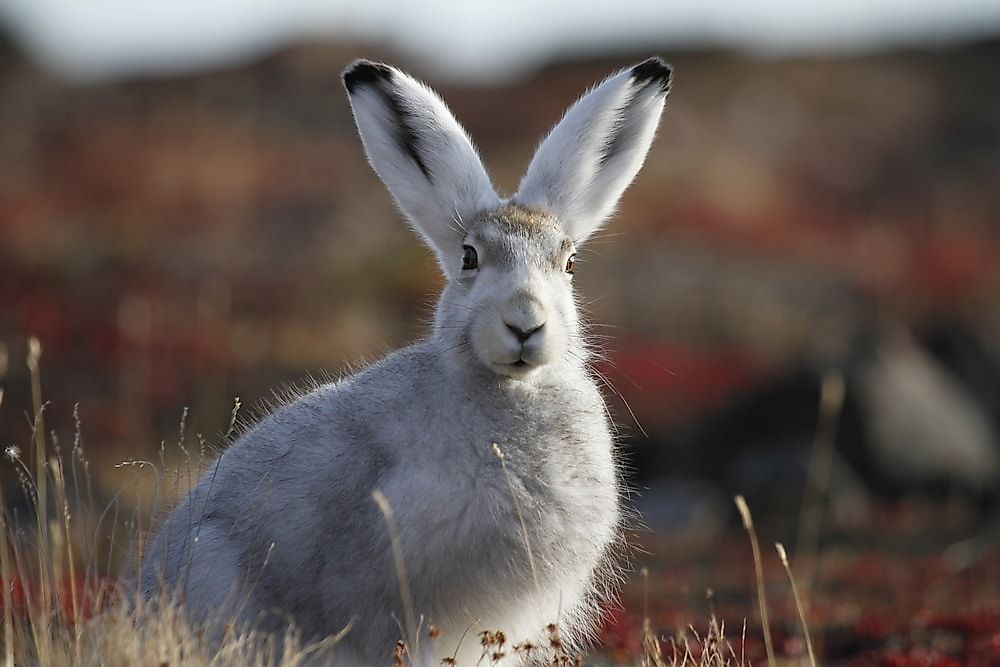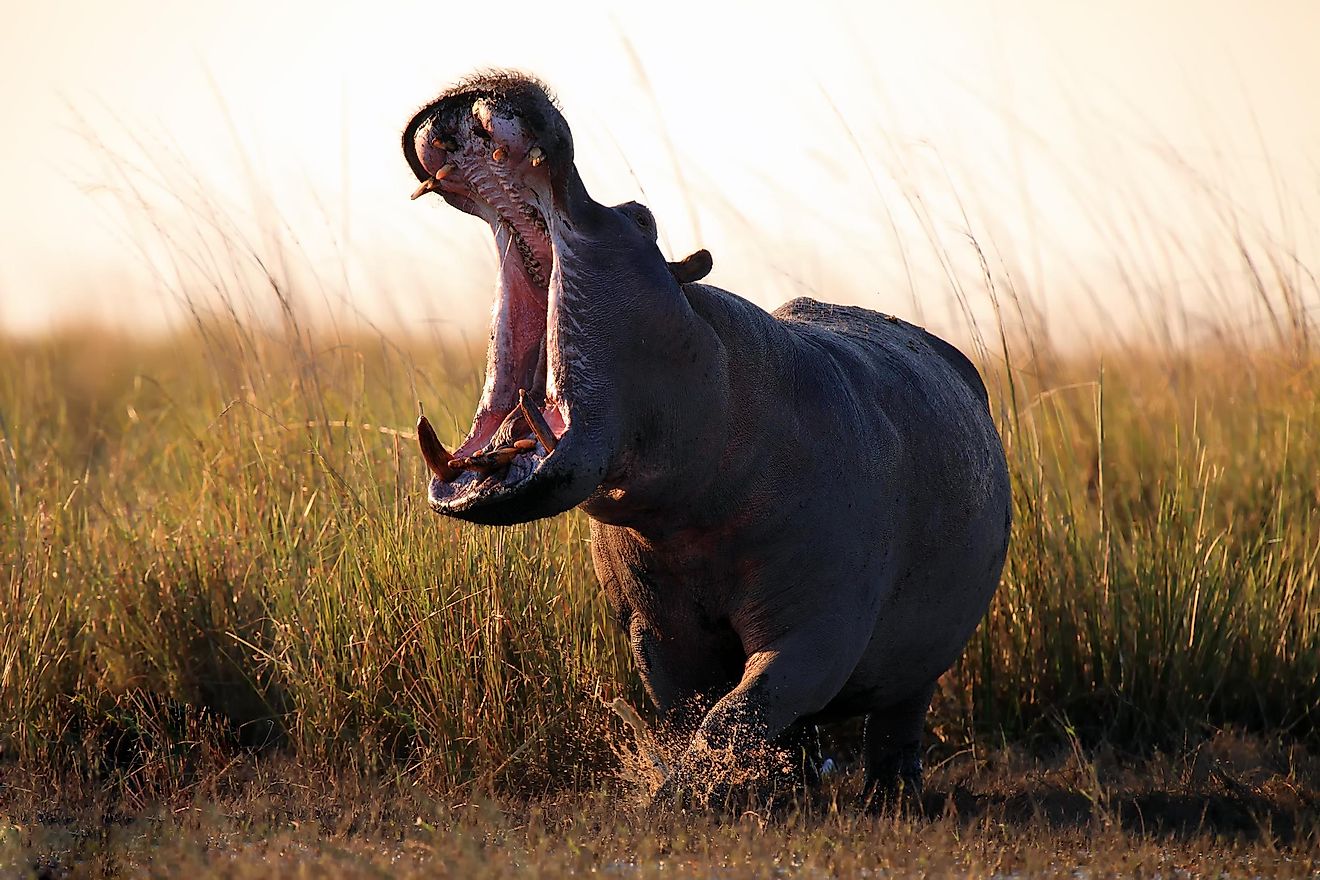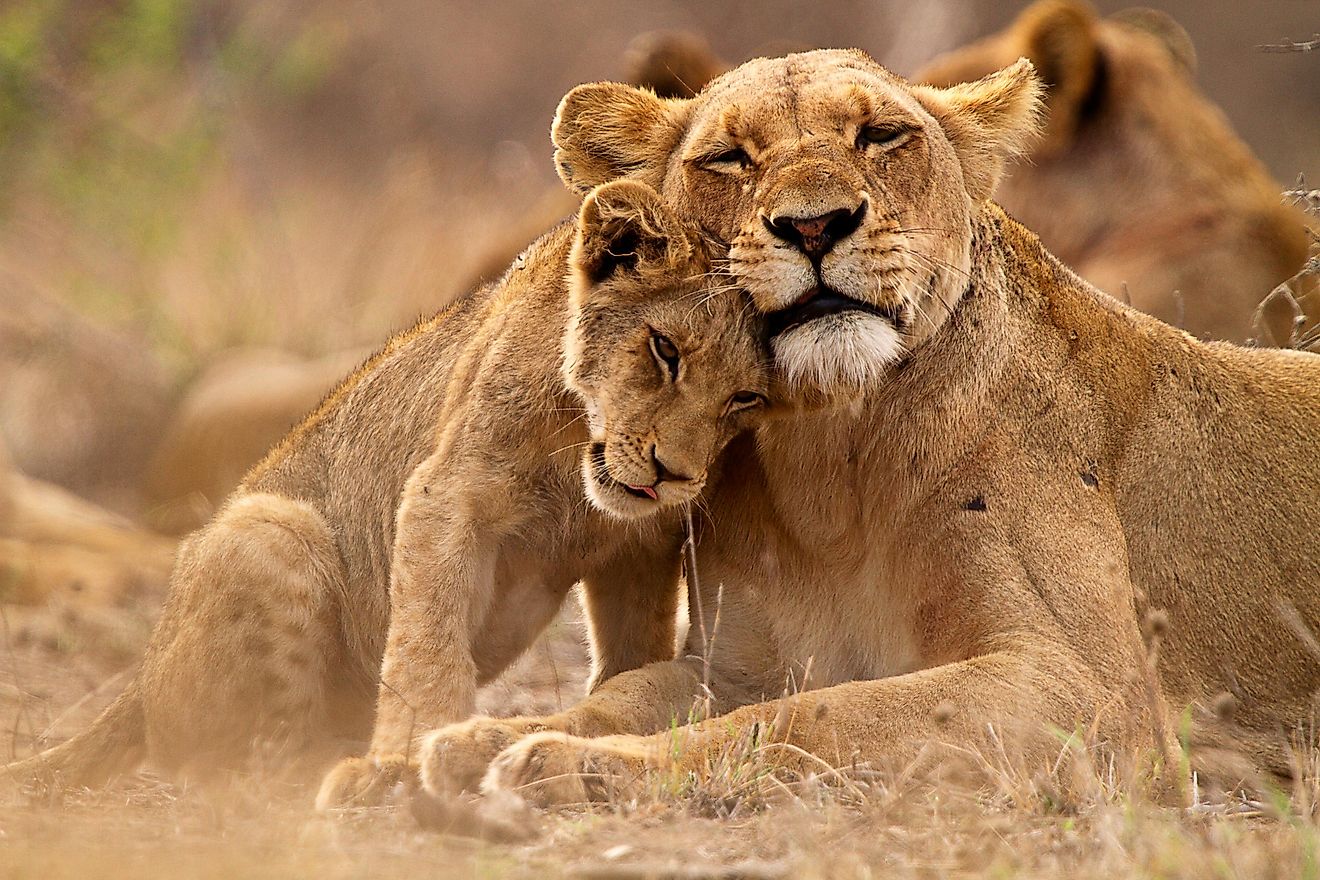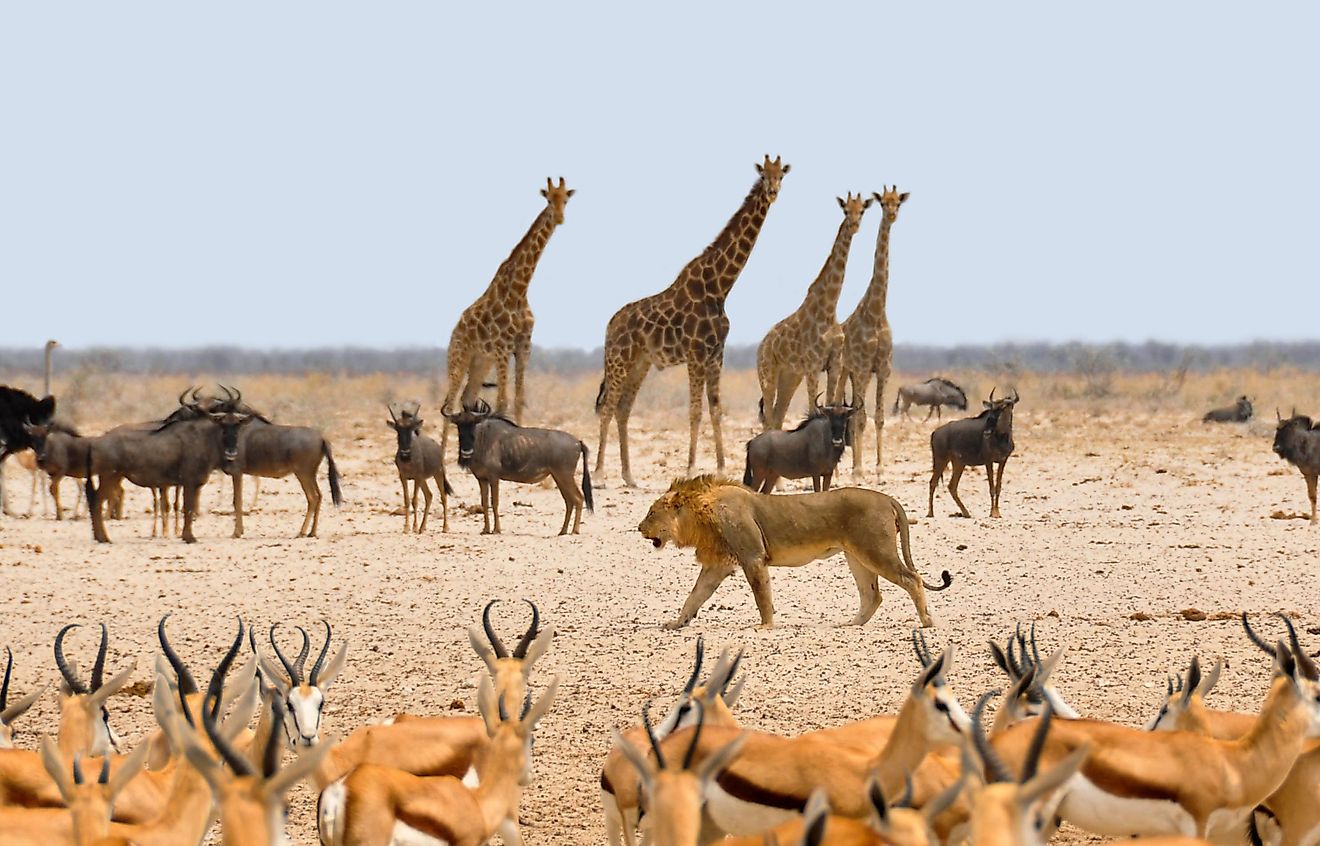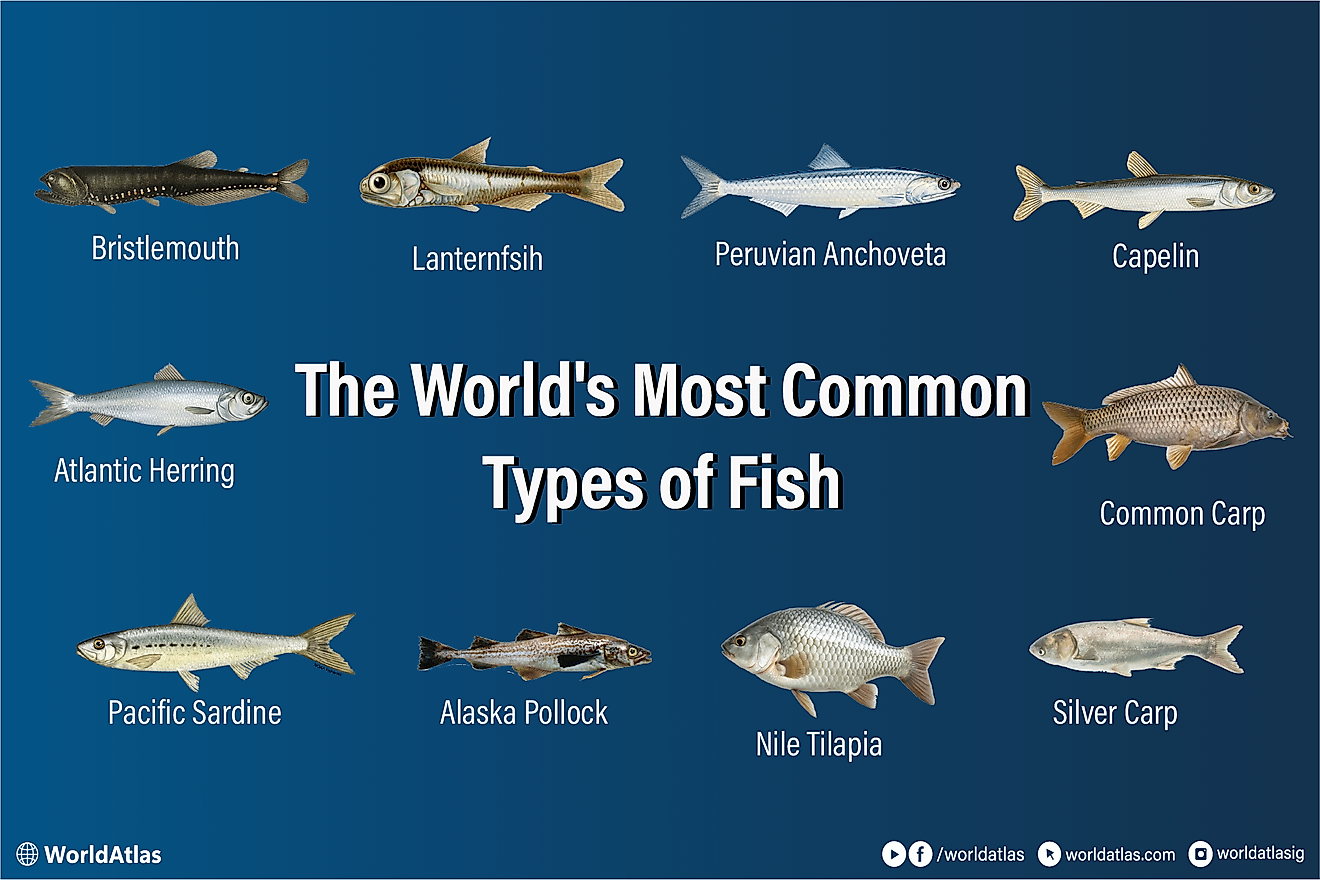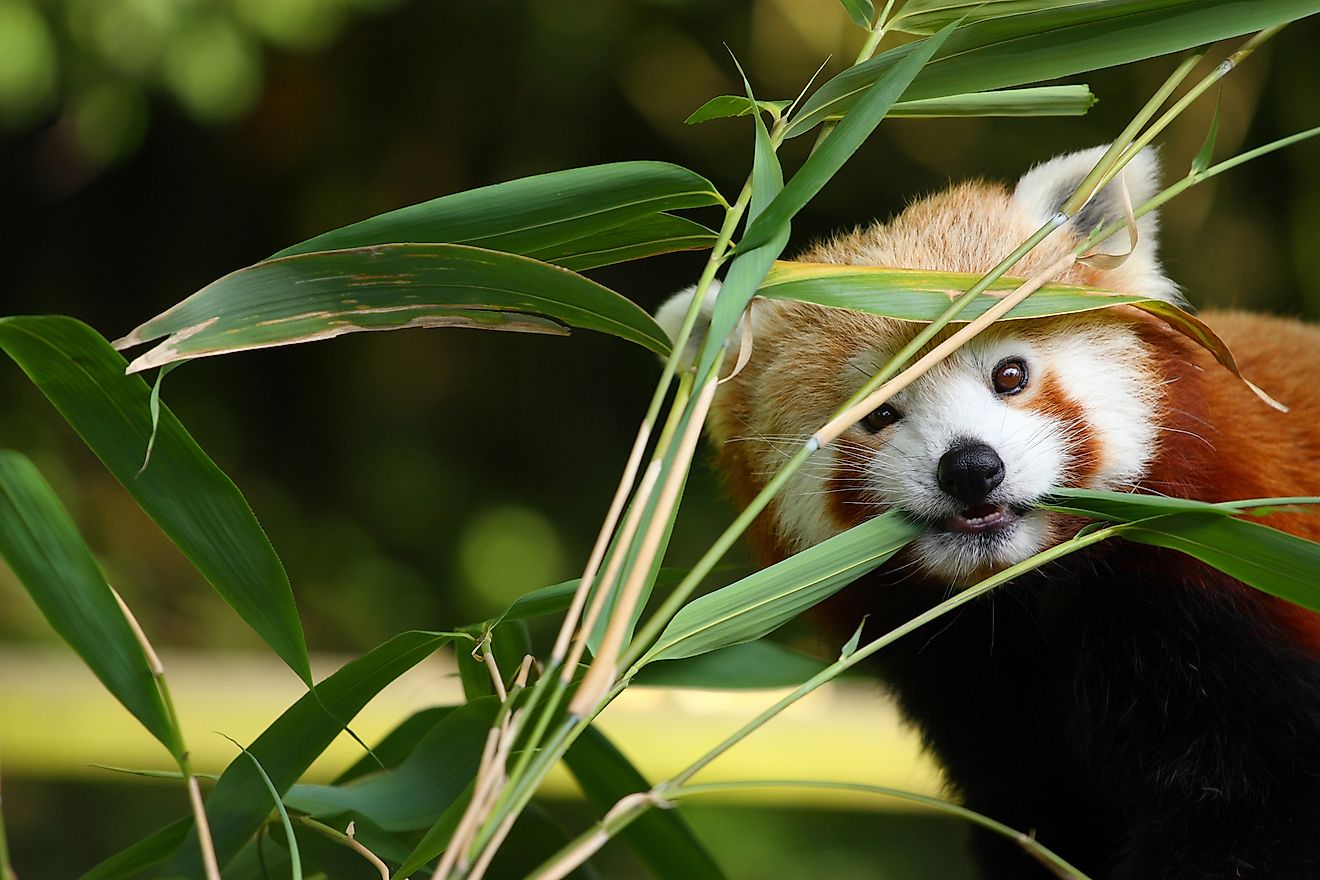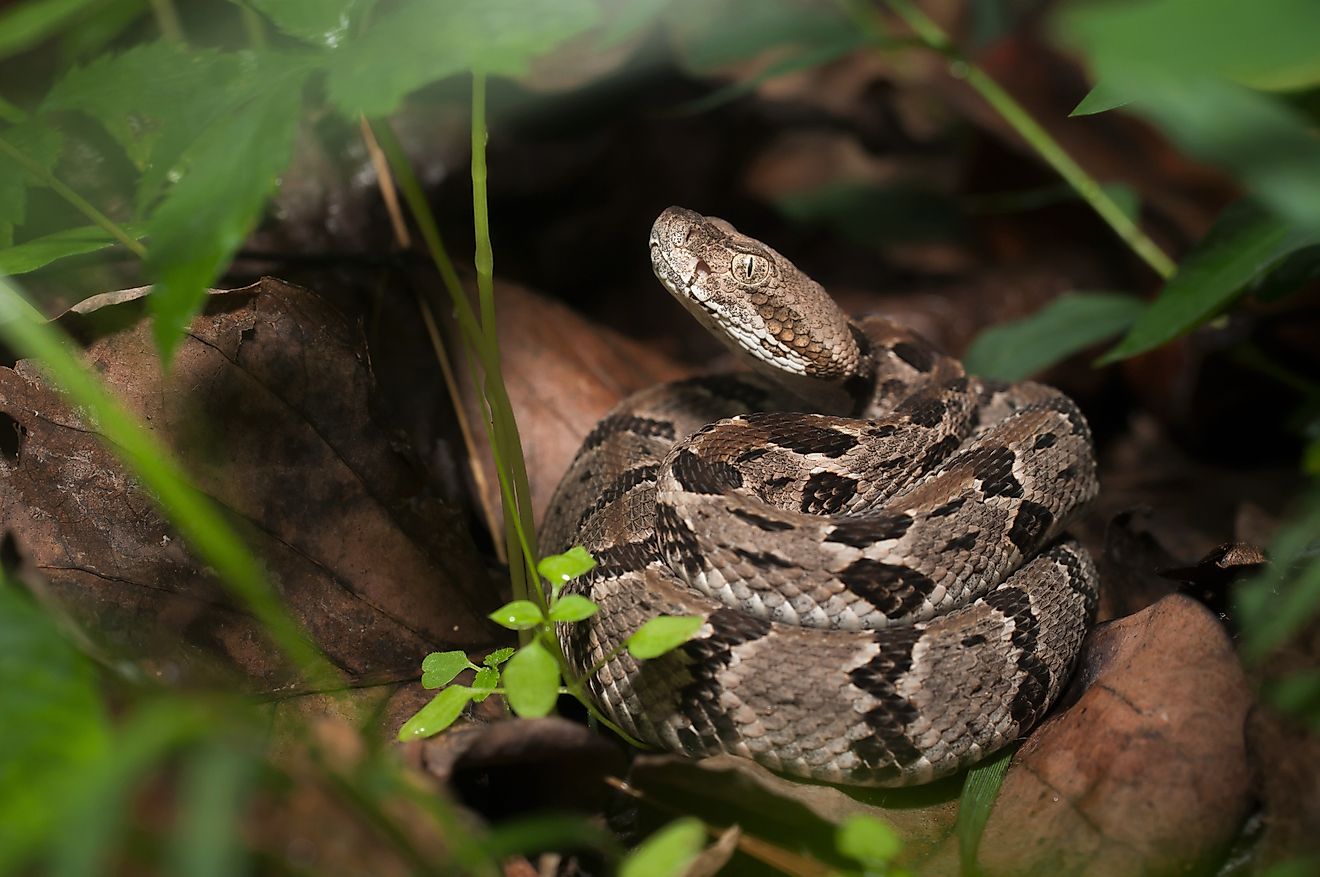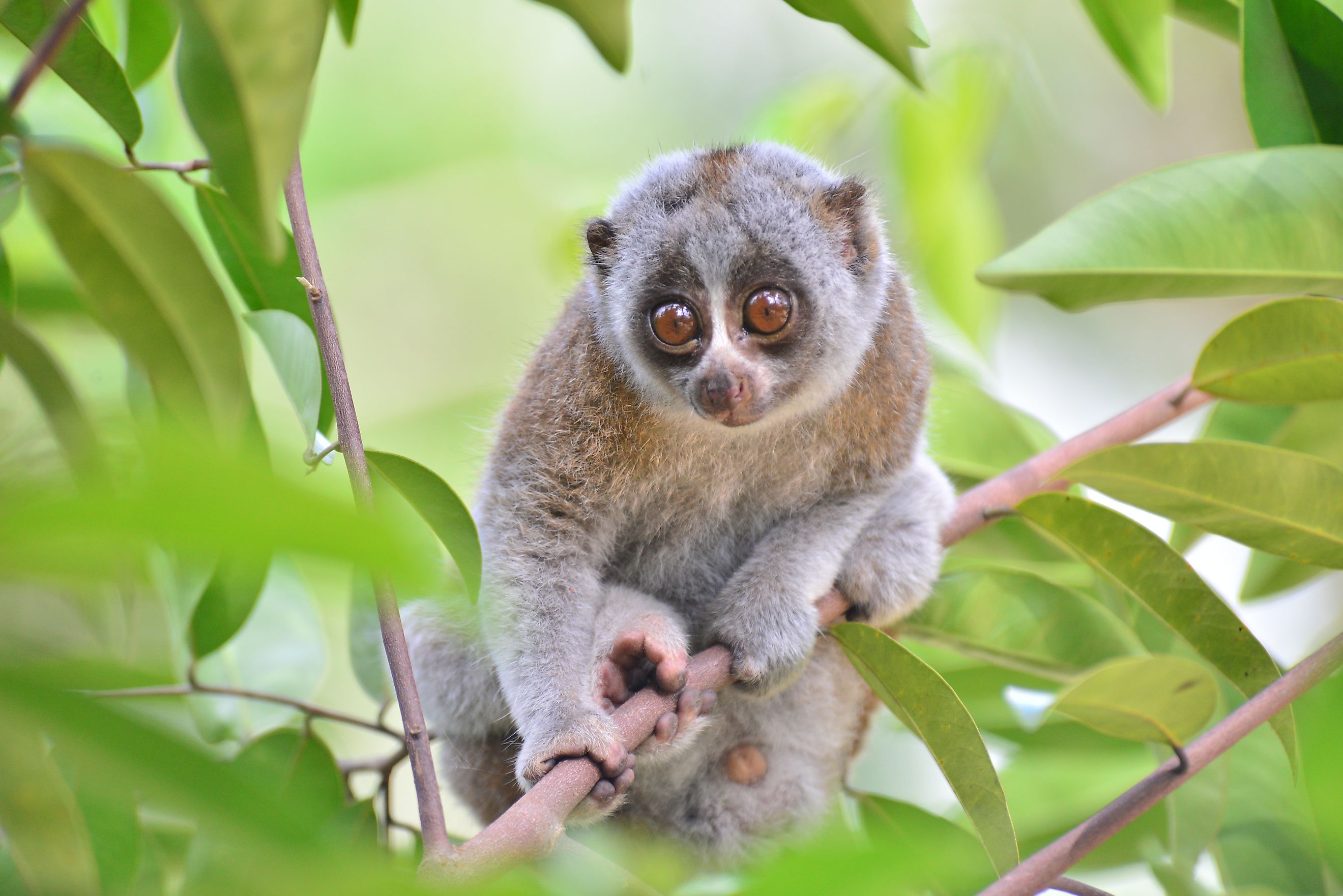
Animals That Are More Dangerous Than They Look
Humans love bringing the natural world close, from turning apex predators into cuddly cartoon toys to attempting to keep wild animals as pets (anyone remember Tiger King?). It’s easy to forget that nature doesn’t play by our rules. Many animals possess powerful survival mechanisms that can turn dangerous when provoked or even approached without caution. In a world where wildlife increasingly overlaps with human environments, understanding the risks is crucial. These are five unassuming animals that pose more danger to people than most expect.
Moose
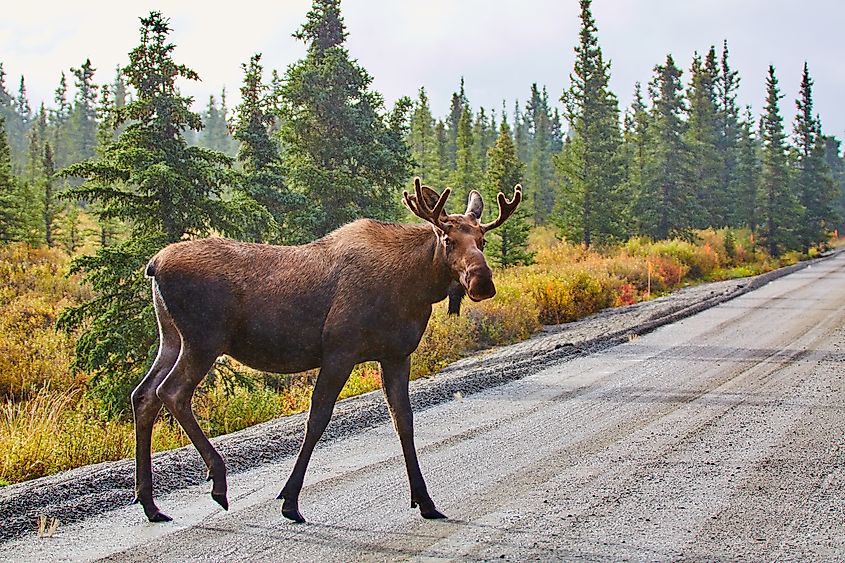
Think about dangerous animals in the wild northern reaches of our world, and you might imagine polar bears, grizzlies, or orcas. But how about moose? They may be herbivores, but these massive mammals are far more dangerous to humans than you might imagine. Moose (Alces alces) are the largest members of the deer family. Adult males can stand up to 6.9 feet (210 cm) tall at the shoulder and weigh up to 1,600 pounds (725 kg). Their long legs, humped shoulders, and massive antlers make them especially imposing. Unlike bears, which tend to be territorial and prefer to stay far away from both humans and other animals, moose tend to flock to low-lying lands with easy access to water…and so do humans. This means that it’s not uncommon to see moose near human settlements, especially in Alaska, Canada, and Scandinavia.
This is bad news for drivers because of their massive size and impressive antlers; collisions with cars are one of the most common causes of moose-related injury. Unsurprisingly, research on moose collisions in New England has shown that car accidents involving a moose are 13 times more likely to lead to serious injury or death than those involving deer. They’ve also been known to charge humans, and when you have a 1,600-pound bull moose running at you, you’re in serious trouble - the victims of three separate moose attacks that occurred in Colorado in May 2025 can attest to that. Though none of them were killed, all suffered serious injury.
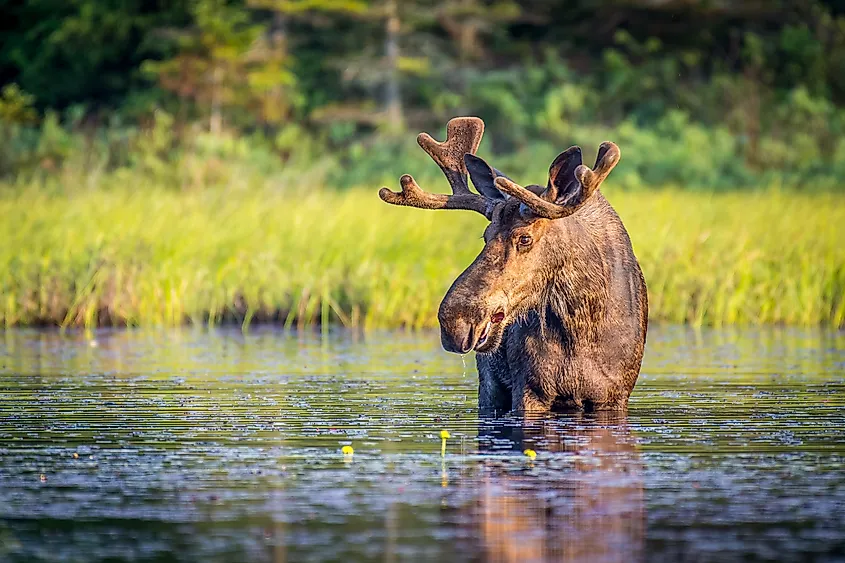
Moose can also become aggressive when provoked, and they have been seen to harbor a very strong dislike for dogs — some will even go out of their way to attack a dog unprovoked simply because they encountered one, especially when they see teams of sled dogs. In one high-profile case, an unprovoked moose attacked a group of sled dogs that were preparing to race the 2022 Iditarod in northern Alaska. And remember those Colorado moose attacks? The victims of all three were out with their dogs when the attacks occurred.
To avoid such nasty confrontations, the state of Alaska advises keeping domestic dogs indoors to prevent potentially fatal encounters with moose. Although the problem is at its most acute in Alaska, Scandinavia, and rural northern Canada, moose are also found in large numbers in the U.S. states of Maine and Colorado, and the same precautions apply.
In order to avoid being charged by a one-ton moose, the easiest safety precaution you can take is simply to keep your distance. If there’s a moose blocking your path, take it as an opportunity to work on your patience and wait as long as it takes for the moose to move. If a moose seems agitated and ready to charge, run: moose are neither predators nor endurance athletes, so they won’t pursue you for very long.
Pufferfish
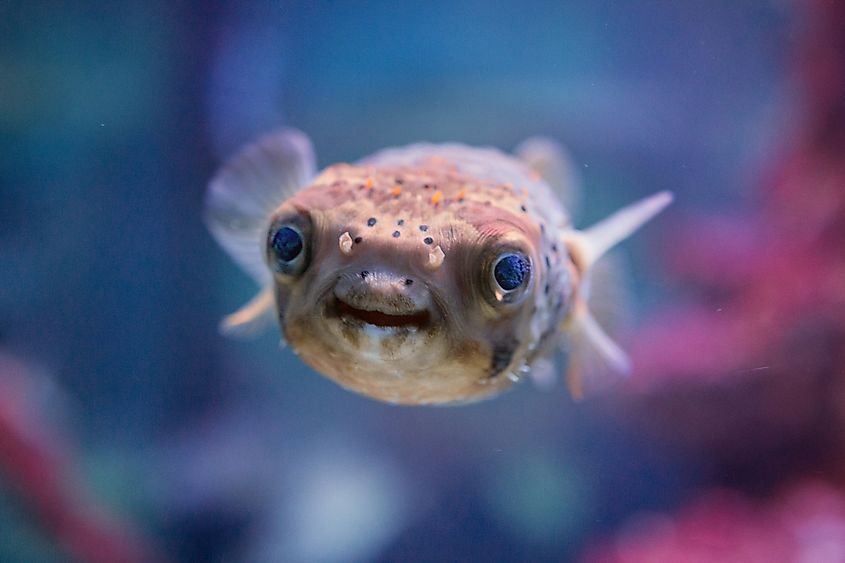
The ordinary snorkeler or diver isn’t likely to have a fateful run-in with a pufferfish. We’ve all seen photos and videos of these iconic warm-water fish in their balloon-like defense state, but they have a biological imperative not to inflate: it uses up a massive amount of energy and oxygen to remain “blown up.” Thus, most humans who encounter them in the wild are unlikely to have any issues, and spotting one is usually a welcome addition to any snorkeler's or diver’s time in the water.
But their famous spines aren’t the only reason pufferfish can pose a threat to humans. Their second, and much more potent, defense mechanism is purely chemical: many of their organs contain fatal doses of tetrodotoxin. This potent neurotoxin cuts off the nervous system’s communication between the brain and other parts of the body. If this sounds like bad news, it is: a predator that tries to ingest a pufferfish will likely experience paralysis that prevents breathing.
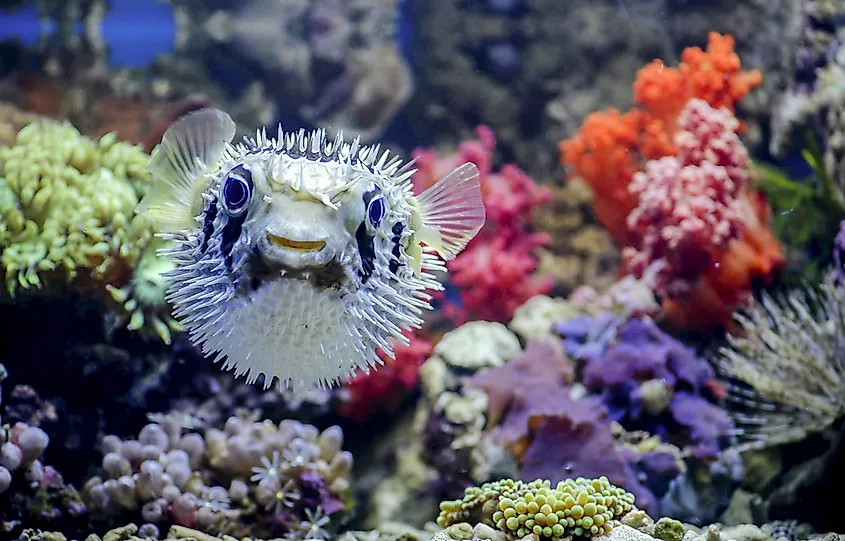
But you’re not likely to be exposed to that toxin if you simply encounter a pufferfish in the wild. Human fatalities are almost always connected to eating pufferfish. Said to cause a pleasant tingling sensation associated with the early stages of tetrodotoxin poisoning, pufferfish is a delicacy in Japan - you may have heard it called by its Japanese name, fugu — and leads to an average of 30 food poisoning deaths every year.
While it’s possible to prepare fugu safely, and the Japanese government requires restaurants that prepare it to be trained and licensed for safety reasons, there’s always a risk. It’s the leading cause of fatal foodborne illness in Japan. Although it’s possible to survive the early stages of tetrodotoxin poisoning after eating pufferfish, as a young man in the United Arab Emirates recently did, it’s wise to remember the risks of eating this potentially deadly dish before you dig in. Most pufferfish species range between 8 and 24 inches (20-60 cm) in length and weigh under 5 pounds (2.3 kg). They have a rounded body, large eyes, and can dramatically inflate by sucking in water (or air), expanding into a balloon-like shape covered in small spines.
Hippopotamus
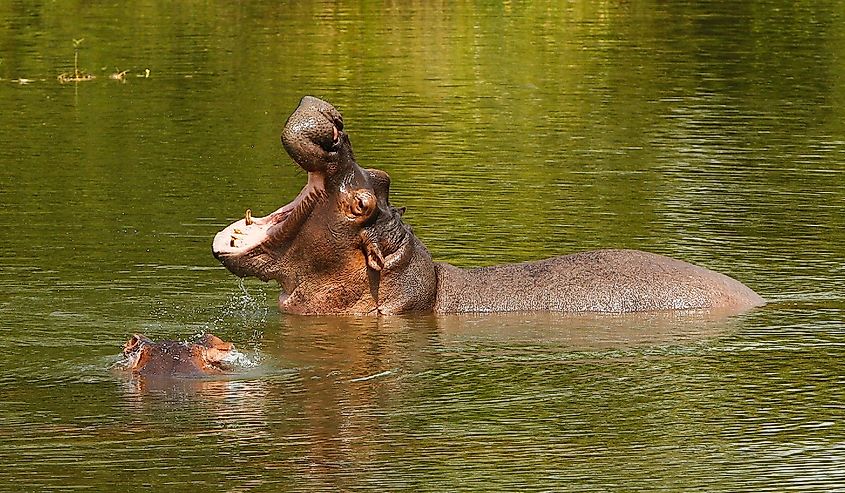
Technically, the deadliest animal in Africa by far is the mosquito. But if you’re looking at anything bigger than a bug, it’s not the lion, the elephant, the rhinoceros, or any large predator that kills the most people in Africa every year: it’s the clumsy-looking hippopotamus. Every year, hippos kill an average of 500 people, making them the continent’s number-one killers in the animal kingdom. Adult hippos (Hippopotamus amphibius) typically reach 10.8 to 16.5 feet (330-500 cm) in length and weigh between 2,870 and 3,300 pounds (1,300-1,500 kg). Standing about 5 feet (150 cm) tall at the shoulder, they have barrel-shaped torsos, enormous jaws, and thick, nearly hairless skin.
So why are these slow-moving aquatic mammals so dangerous? They’re aggressively territorial, so they exhibit threatened behavior when people encroach on their territory, which some attribute to hippos mistaking boats for crocodiles. As such, they’ve been known to charge at boats, and their massive jaws can easily inflict irreparable damage to watercraft. This was the case in a highly publicized 2024 incident wherein a British tourist taking a guided safari tour was severely injured by a hippo that attacked his canoe.
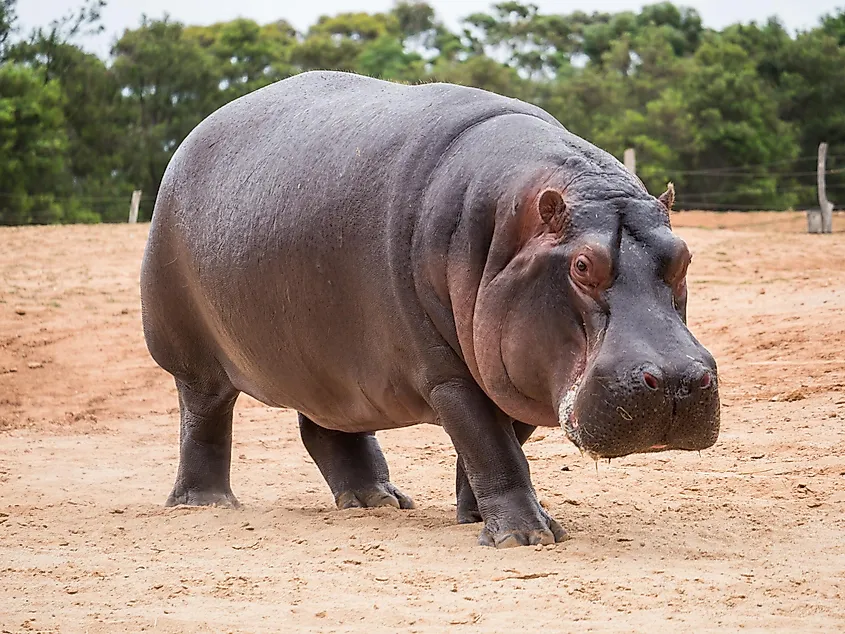
They can also reach surprisingly high land speed, as in a February 2025 case when a New Jersey woman was killed by a hippo she encountered while on a guided walk in Zambia. Regardless of the location of the attack, hippos’ powerful jaws and long, sharp teeth can inflict devastating injuries on anyone unfortunate enough to be attacked. Adding to the danger is the fact that hippos can be extremely unpredictable, leaving visitors unsure of what they might consider threatening or provocative.
No matter where you are in hippo country, it pays to take several precautions. First, know that hippos are most dangerous in the dry season: resources are more scarce, and hippos are more likely to be aggressive as a result. Don’t get anywhere near a hippo on land, and tap on the outside of your boat to let hippos know where you are. (Better yet: avoid rivers where hippos are known to congregate.) And in the event that a confrontation is unavoidable, try to find a large barrier like a tree and take cover.
Slow Loris
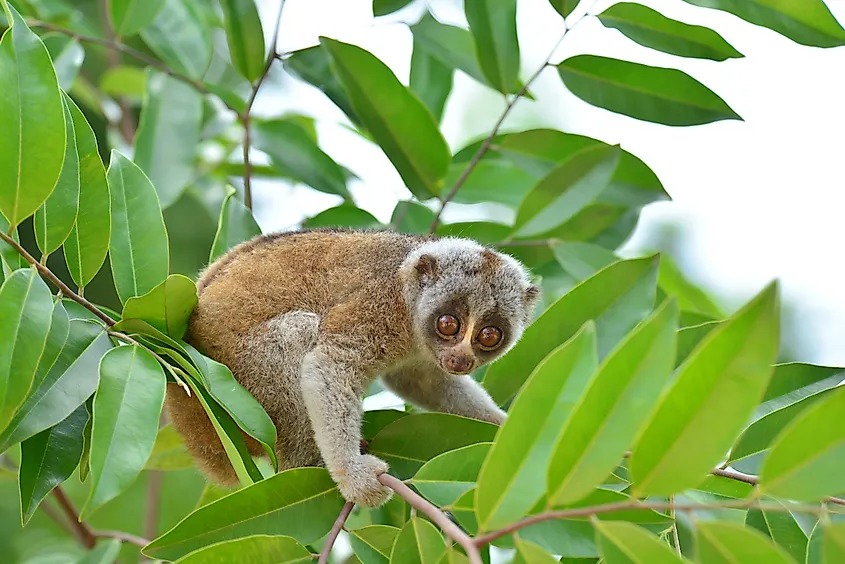
The little-known slow loris is an adorable primate with huge eyes that certainly don’t give the impression of a creature humans should be wary of. The slow loris (genus Nycticebus) is a small primate about 10 to 15 inches (25-38 cm) long, weighing around 1 to 2 pounds (0.5-1 kg). It has big forward-facing eyes, a round head, and soft fur, giving it an irresistibly cute appearance, which belies its venomous bite. But what they lack in size, strength, and sharp teeth, slow lorises more than make up for in toxicity. That’s right: this primate secretes a toxin that can have some seriously unpleasant and even deadly side effects if you happen to provoke one.
If poison seems like an odd defense mechanism for a mammal to you, it is. Scientists were puzzled by it for decades before coming to the current conclusion that lorises use their deadly bites as weapons against one another in territorial squabbles, rather than in self-defense. How do we know? Because lorises have been seen with the kind of gruesome wounds that loris bites can cause.
Slow lorises secrete an oil in their armpits that becomes a potent toxin when they lick their armpits and combine it with their saliva, and the resulting poison is powerful enough to rot flesh. According to researchers who study them in the wild, some lorises have been seen with their faces partially melted after fights with their peers. In humans, the toxin carries a higher risk of anaphylaxis than flesh-rotting, but it’s still no joke.
Since it’s not common for humans to come into contact with these nocturnal animals, there aren’t many reported cases of slow loris bites in humans. However, those who unwisely attempt to keep them as pets are a different story. In 2021, a woman in Japan was trying to break up a fight between her three pet lorises when she herself was bitten and went into anaphylactic shock. Three other such cases have been reported in the past, including a wildlife biologist who was bitten while studying lorises in Borneo in 2014.
Kangaroo
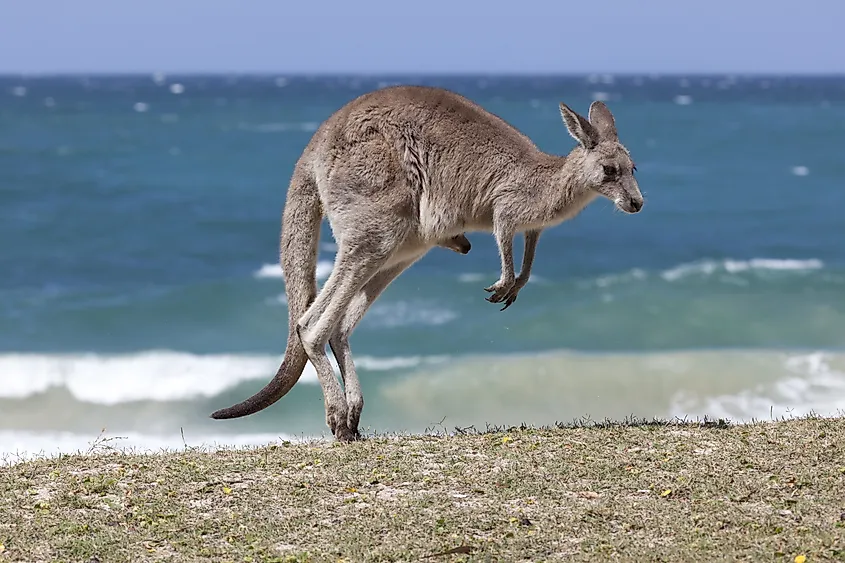
From the pages of Winnie the Pooh to your local zoo, kangaroos are much-loved outside of their native Australia for their endearing faces and their unusual way of getting around. But Aussies know something most don’t: these quirky marsupials are not to be messed with. Although kangaroos live in semi-urban areas and largely tolerate human presence when they’re not provoked, they’re easily capable of injuring a human if they feel the need to defend themselves. Kangaroo-inflicted fatalities aren’t unheard of in Australia. Male red kangaroos, the largest species, can stand over 6.5 feet (200 cm) tall and weigh up to 200 pounds (90 kg). They have powerful hind legs and tails, muscular chests, and a unique hopping gait that allows them to cover long distances at high speeds.
It’s only natural that any animal that never skips leg day could inflict some serious damage. Kangaroos’ tails and legs are extremely powerful, and they don’t hesitate to use either to attack if they feel threatened. Moreover, they’re extremely muscular animals and have also been known to use wrestler-like grappling techniques when fighting amongst themselves, which isn’t great news for you if you happen to offend one. If the animal kingdom had a martial arts master, it would definitely be the kangaroo. That said, it’s very rare for a kangaroo to kill a man: a 2022 kangaroo attack was the first confirmed fatality since 1936, and it was suspected that the victim, an elderly man in rural Western Australia, had been keeping it as a pet.
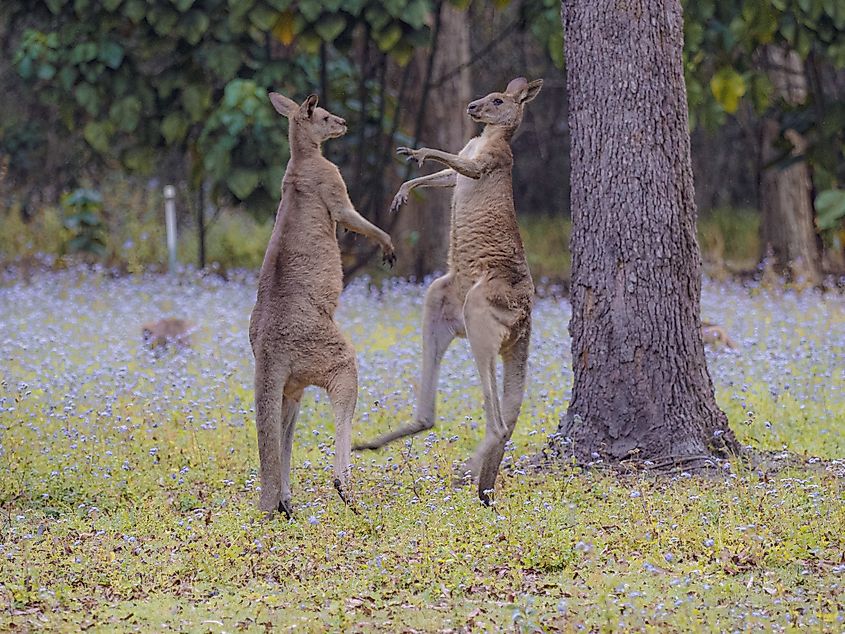
But fatalities are only uncommon because Australians have learned to take common-sense safety measures for living around kangaroos. The government of the state of Queensland suggests several simple steps: avoiding known kangaroo habitat; keeping your distance from any kangaroos you encounter; carrying a stick to defend yourself; and slowing down on the road at night so you won’t accidentally strike a kangaroo that wanders into the road. (This is another safety hazard in kangaroo country.) If you encounter a kangaroo that appears aggressive, it’s best to move slowly, make yourself look smaller, and try to put a barrier between yourself and the kangaroo. If a kangaroo attacks, drop to the ground and curl up to protect your head.
Finishing Thoughts
The animal kingdom is full of creatures you wouldn’t want to run into out in the wild, but there are just as many species that fly under the radar. These five creatures that are more dangerous than they look are only a few surprising examples. So when you encounter a wild animal closely, it’s always best to give it a wide berth: assuming that an animal could have some tricks up its sleeve will help you avoid finding out what that seemingly harmless species can do when it feels threatened. Whether you’re going about your day in town or enjoying the outdoors, a healthy respect for the wild is always a good idea.
